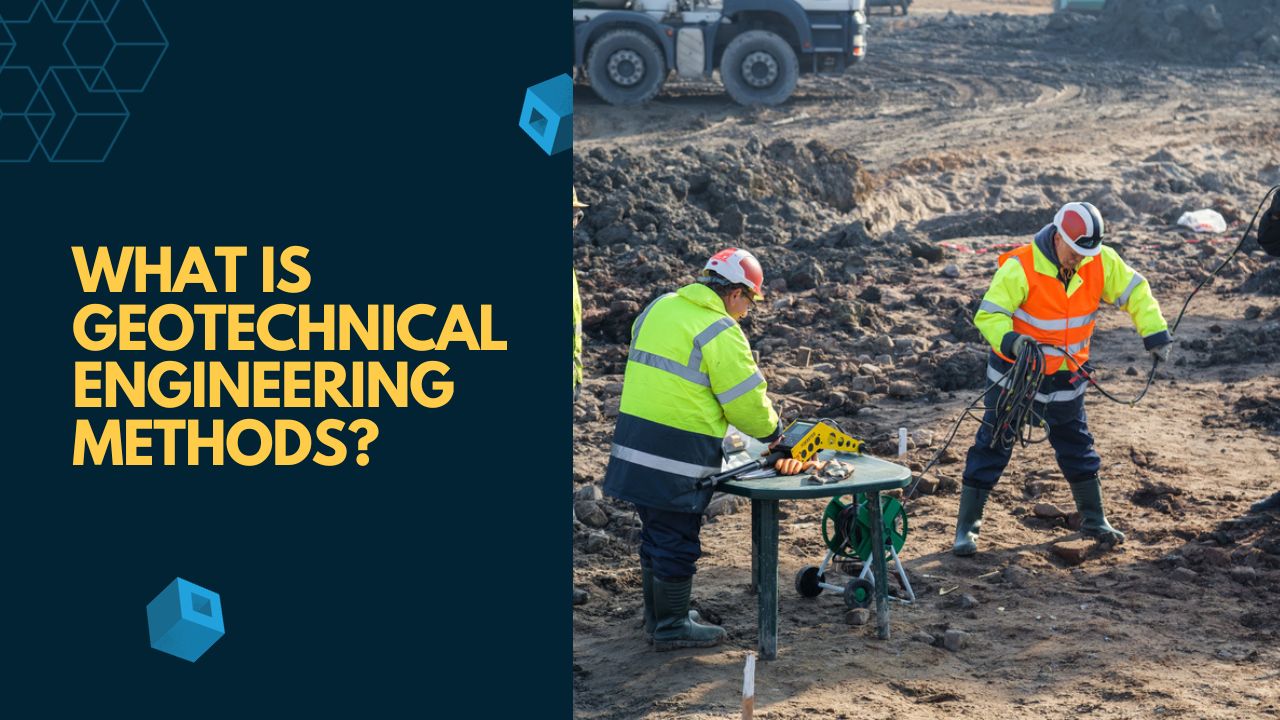What is Geotechnical engineering methods?
Geotechnical engineering methods involve the application of principles from soil mechanics and rock mechanics to assess and understand the behavior of the Earth’s subsurface materials. These methods are crucial in various civil engineering projects, including the design and construction of foundations, slopes, tunnels, dams, and other infrastructure.
key geotechnical engineering methods:
- Site Investigation: This involves the collection of data about the subsurface conditions at a project site. Methods include drilling boreholes, taking soil samples, conducting geophysical surveys, and analyzing geological maps. Site investigation helps engineers understand the soil and rock properties, groundwater conditions, and potential risks.
- Laboratory Testing: Soil and rock samples collected during site investigation are subjected to laboratory tests to determine their physical and mechanical properties. Common tests include grain size analysis, moisture content, density, shear strength, and consolidation tests. These results are essential for designing foundations and assessing the stability of slopes.
- Field Testing: In-situ testing methods provide information about the properties of soil and rock at their natural state. Standard Penetration Test (SPT), Cone Penetration Test (CPT), and pressuremeter tests are examples of field tests used to assess soil resistance and other relevant parameters.
- Geotechnical Modeling: Engineers use mathematical models and computer simulations to analyze and predict the behavior of soil and rock under various loading conditions. Finite Element Analysis (FEA) and other numerical methods help in understanding complex interactions and optimizing designs.
- Foundation Design: Geotechnical engineers use the collected data and analyses to design foundations that can support the loads of structures safely. This may involve shallow foundations (such as footings) or deep foundations (such as piles or caissons), depending on the site conditions.
- Slope Stability Analysis: Geotechnical methods are employed to assess the stability of natural and man-made slopes. This is crucial for infrastructure projects in hilly or mountainous regions, as well as for excavations and embankments.
- Retaining Wall Design: Geotechnical engineering methods are applied to design retaining walls that can withstand the lateral pressure of soil and prevent slope failures.
- Ground Improvement Techniques: In some cases, the engineering properties of the soil may be improved to meet project requirements. Techniques like compaction, grouting, and soil reinforcement are used for ground improvement.
- Earthquake Engineering: Geotechnical engineering plays a significant role in assessing and mitigating the impact of earthquakes on structures. This includes understanding soil liquefaction potential and designing foundations to withstand seismic forces.
Overall, geotechnical engineering methods are essential for ensuring the stability, safety, and longevity of civil engineering projects by addressing the unique challenges posed by the Earth’s subsurface materials.
FAQS
Frequently asked questions (FAQs) related to geotechnical engineering methods:
What is geotechnical engineering?
Geotechnical engineering is a branch of civil engineering that focuses on the behavior of Earth materials, including soil and rock, to assess and design foundations, slopes, tunnels, dams, and other infrastructure projects.
Why is site investigation important in geotechnical engineering?
Site investigation is crucial because it provides essential data about subsurface conditions, helping engineers understand soil and rock properties, groundwater levels, and potential risks. This information is vital for designing safe and stable structures.
What are some common laboratory tests in geotechnical engineering?
Common laboratory tests include grain size analysis, moisture content determination, density tests, shear strength tests, and consolidation tests. These tests help determine the physical and mechanical properties of soil and rock.
What is the role of in-situ testing in geotechnical engineering?
In-situ testing, such as Standard Penetration Test (SPT) and Cone Penetration Test (CPT), provides information about the properties of soil and rock at their natural state. This data is used to assess soil resistance and other relevant parameters.
How is geotechnical modeling used in engineering projects?
Geotechnical modeling involves the use of mathematical models and computer simulations to analyze and predict the behavior of soil and rock under different loading conditions. It helps engineers understand complex interactions and optimize designs.
What is the purpose of foundation design in geotechnical engineering?
Foundation design is essential to ensure that structures are safely supported by the underlying soil or rock. Geotechnical engineers use data and analyses to design foundations, which can be shallow (e.g., footings) or deep (e.g., piles or caissons).
How does geotechnical engineering address slope stability?
Geotechnical methods are employed to assess the stability of natural and man-made slopes. This is crucial for infrastructure projects in hilly or mountainous regions, as well as for excavations and embankments.
What are ground improvement techniques in geotechnical engineering?
Ground improvement techniques are methods used to enhance the engineering properties of soil. This may include compaction, grouting, and soil reinforcement to meet project requirements.
How does geotechnical engineering contribute to earthquake engineering?
Geotechnical engineering plays a significant role in assessing and mitigating the impact of earthquakes on structures. This involves understanding soil liquefaction potential and designing foundations to withstand seismic forces.

